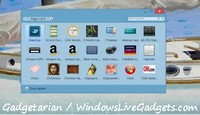If you use Windows 7 or 8, please check first TheFreeWindows’ guide on how to create a disk image or clone your system disk, to move to a new drive. If you replace your old HDD with a Solid State Disk (SSD), check this guide on migrating Windows to SSD easily and safely, without reinstalling anything.
You know you are lucky, if a year passes without the need to reformat your disk and reinstall everything from the start. Viruses, poorly designed software, software conflicts, user mistakes… – there are a lot of reasons why a computer becomes seriously unstable after a while and a fresh setup is necessary.
To install Windows and various drivers, to configure everything as you had it before the disaster, installing and configuring applications that you use, like Office, or even your games, you need in the best case 3 or 4 days. If you are a power user, working with a computer overstuffed with programs, a week passes and you’re still setting up applications and making adjustments… You can save all this time and effort, if you clone your disk at a time when everything works.
1 – Creating a Real System Restore
When format is unavoidable, instead of starting from a blank disk, you can start from this clone you had created earlier. Think of this as an advanced system restore. As you might know, the native Windows system restore seldom can be really efficient.
To make possible a real System Restore, you need a program that will replicate ( create an exact image) of your system disk. You also need to have your personal files, i.e. the files you created for your work and do not belong to the system, on a separate disk or partition, because the system partition will be replaced by the clone. If your computer has only one disk or partition, carefully backup all your personal files before the replacement.
To create an image/clone of your system disk (the disk or partition that contains the operating system) you can use reliable freeware applications like DriveImage XML, Macrium Reflect Free, Easeus Todo Backup, etc. DriveImage XML will let you restore files even partially (not the whole disk).
